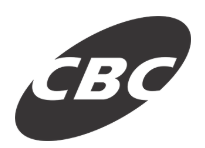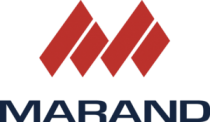Worldwide Automotive Lead-Acid Battery Industry to 2027 - Featuring Johnson Controls, Exide Technologies and Robert Bosch Among Others - ResearchAndMarkets.com
The "Automotive Lead-Acid Battery Market: Global Industry Trends, Share, Size, Growth, Opportunity and Forecast 2022-2027" report has been added to ResearchAndMarkets.com's offering.
The global automotive lead-acid battery market size reached US$ 12.7 Billion in 2021. Looking forward, the publisher expects the market to reach US$ 15.0 Billion by 2027, exhibiting a CAGR of 2.6% during 2022-2027.
Companies Mentioned
- Johnson Controls Inc.
- Exide Technologies Inc.
- GS Yuasa Corporation
- Reem Batteries & Power Appliances Co. Saoc
- Enersys Inc.
- Saft Groupe S.A.
- Northstar Battery Company LLC.
- C&D Technologies Inc.
- Robert Bosch GmbH
- East Penn Manufacturing Company
- Panasonic Corporation
- Trojan Battery Company
- Samsung Sdi Company Limited
- Leoch International Technology Ltd
- Exide Industries Ltd.
- Koyo Battery Co. Ltd.
- Tai Mao Battery Co. Ltd.
- PT Century Batteries Indonesia
- Thai Bellco Battery Co.,Ltd.
- CSB Battery Co. Ltd. (Hitachi Chemical Energy Technology Co. Ltd.).
Keeping in mind the uncertainties of COVID-19, they are continuously tracking and evaluating the direct as well as the indirect influence of the pandemic on different end use sectors. These insights are included in the report as a major market contributor
Lead-acid batteries are the oldest type of rechargeable batteries invented by Gaston Plante in 1859 and are used for the starting, lighting, and the ignition (SLI) process in the automobiles. These types of batteries use sponge lead (Pb) and lead peroxide (PbO2) plates immersed in sulfuric acid to convert chemical energy into electrical power. These batteries have been in the industry for 100 years and are still a popular source of energy storage.
They are generally used in power stations and substations as they have high cell voltage and lower cost. In spite of having very low energy-to-weight ratio and a low energy-to-volume ratio, these batteries supply high surge currents which implies that their cells have a large power-to-weight ratio. This makes them highly compatible for motor vehicles in order to supply high current required by automobile starter motors. Apart from this, lead-acid batteries also contribute in supplying voltage to various accessories in vehicles such as music systems, wipers, radio, air conditioners, charging plugs, etc.
The demand of automotive lead-acid batteries has a strong correlation with the global automobile industry. The global automobile market has exhibited strong performance across both developed and emerging markets after a period of sluggish growth as a result of the recent global economic crisis.
Moreover, a spontaneous rise in the use of electric vehicles and e-bikes has also catalyzed the demand of lead-acid batteries. Characteristics such as high current delivery, resistance to corrosion and abrasion, tolerance to overcharging, low internal impedance, etc., make them appropriate to be used in electric vehicles. On a regional basis, the Asia Pacific region represented the biggest driver of automotive lead-acid batteries accounting for the bulk of the total sales. Asia Pacific was followed by North America and Europe.
Key Question Answered in this Report
1. What was the size of the global automotive lead-acid battery market in 2021?
2. What is the expected growth rate of the global automotive lead-acid battery market during 2022-2027?
3. What are the key factors driving the global automotive lead-acid battery market?
4. What has been the impact of COVID-19 on the global automotive lead-acid battery market?
5. What is the breakup of the global automotive lead-acid battery market based on the vehicle type?
6. What is the breakup of the global automotive lead-acid battery market based on the product?
7. What is the breakup of the global automotive lead-acid battery market based on the type?
8. What is the breakup of the global automotive lead-acid battery market based on the customer segment?
9. What are the key regions in the global automotive lead-acid battery market?
10. Who are the key players/companies in the global automotive lead-acid battery market?
Key Topics Covered:
1 Preface
2 Scope and Methodology
3 Executive Summary
4 Introduction
4.1 Overview
4.2 Key Industry Trends
5 Global Automotive Lead-Acid Battery Market
5.1 Market Overview
5.2 Market Performance
5.3 Impact of COVID-19
5.4 Market Breakup by Vehicle Type
5.5 Market Breakup by Product
5.6 Market Breakup by Type
5.7 Market Breakup by Customer Segment
5.8 Market Breakup by Region
5.9 Market Forecast
6 Market Breakup by Vehicle Type
7 Market Breakup by Product
8 Market Breakup by Type
9 Market Breakup by Customer Segment
10 Market Breakup by Region
11 Global Automotive Lead-Acid Battery Industry: SWOT Analysis
12 Global Automotive Lead-Acid Battery Industry: Value Chain Analysis
13 Global Automotive Lead-Acid Battery Industry: Porters Five Forces Analysis
14 Global Automotive Lead-Acid Battery Industry: Price Analysis
15 Automotive Lead-Acid Battery Manufacturing Process
16 Competitive Landscape
16.1 Market Structure
16.2 Key Players
16.3 Profiles of Key Players
For more information about this report visit https://www.researchandmarkets.com/r/i32czb
View source version on businesswire.com: https://www.businesswire.com/news/home/20220128005325/en/




